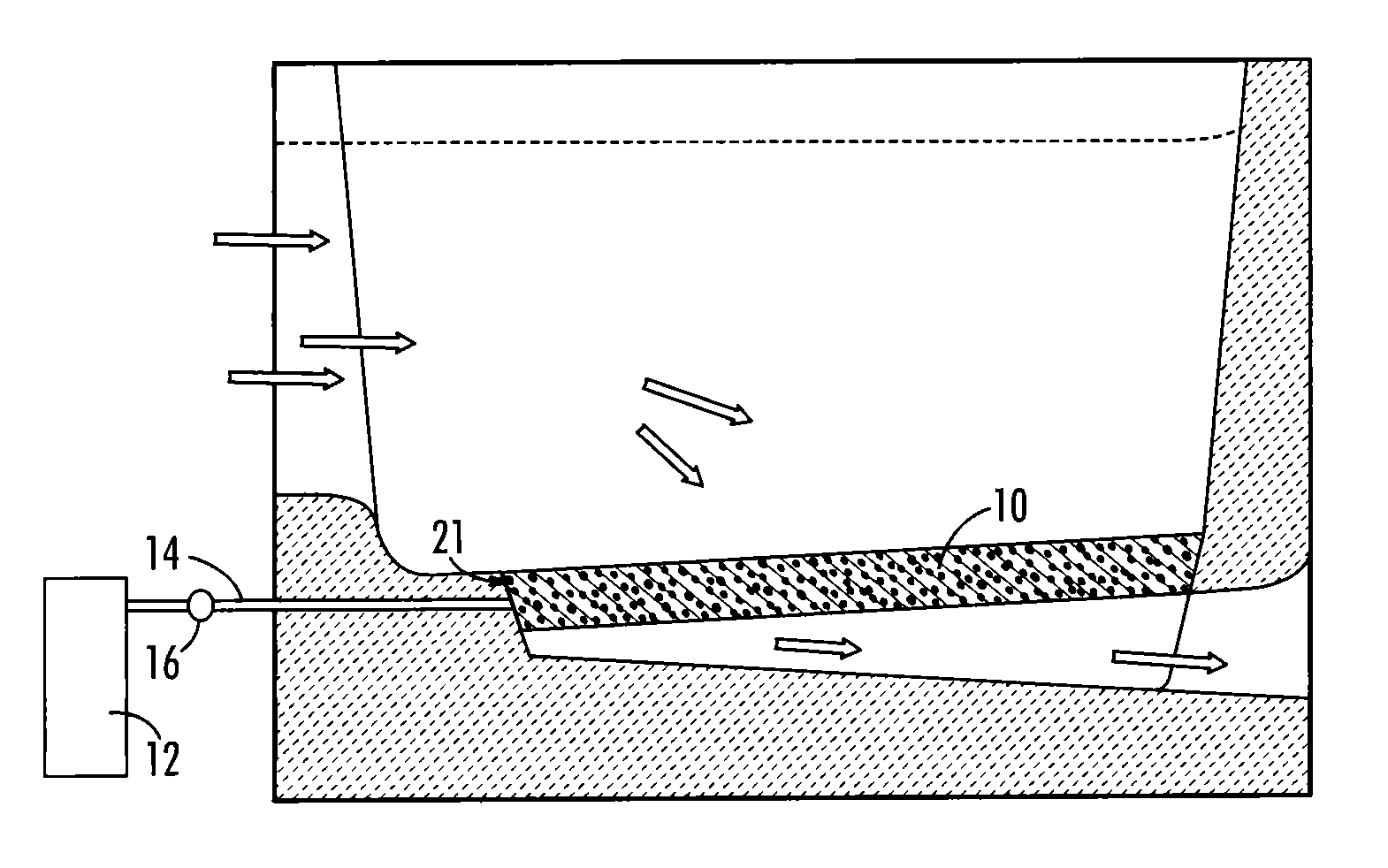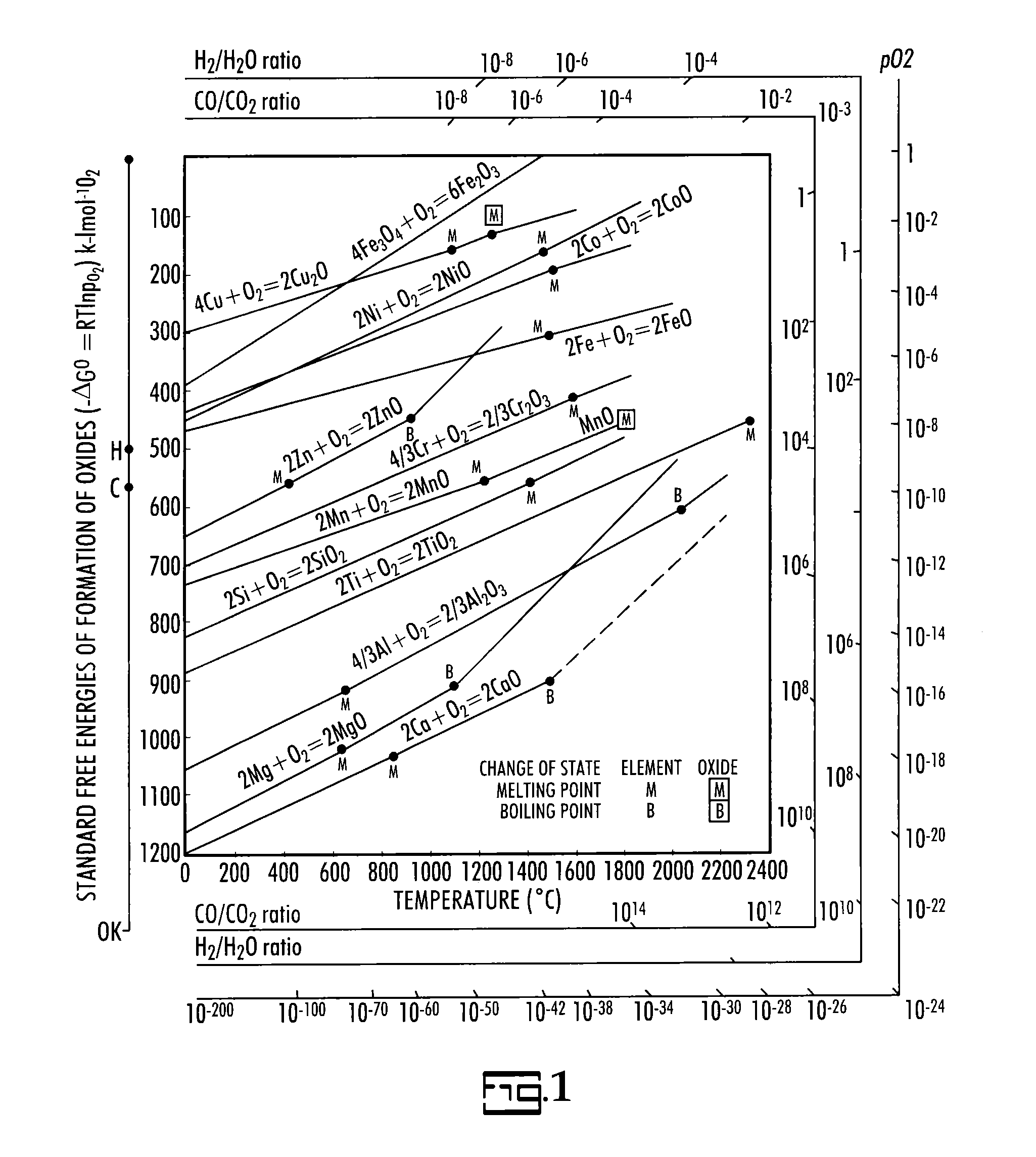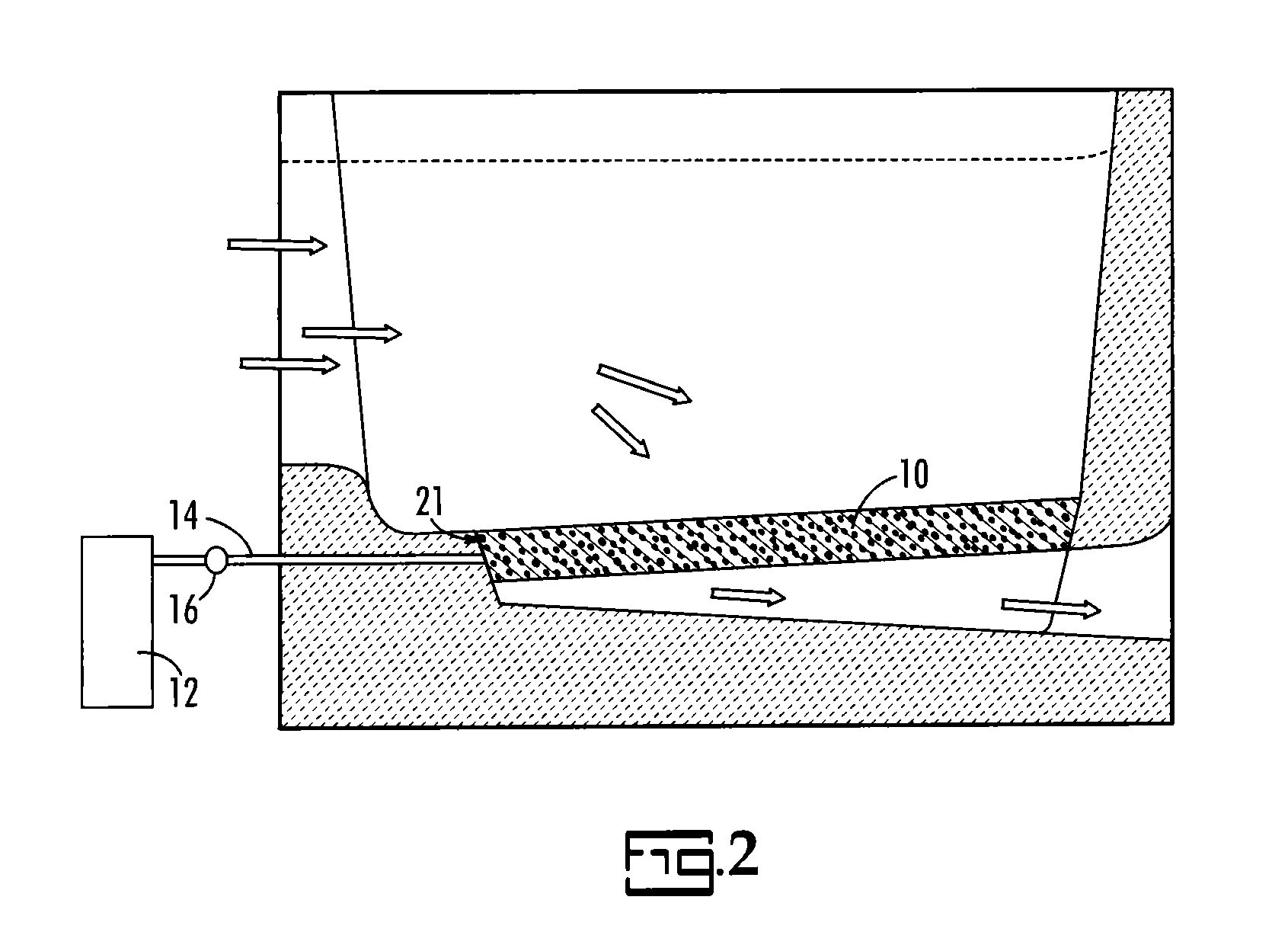Method for filtering molten aluminum and molten aluminum alloys
a technology of molten aluminum and alloys, applied in the direction of filtration separation, separation process, membrane technology, etc., can solve the problems of reducing the strength of the reticulated foam structure, affecting the filtration effect, and reducing the strength of the alumina grain as inclusion material
- Summary
- Abstract
- Description
- Claims
- Application Information
AI Technical Summary
Benefits of technology
Problems solved by technology
Method used
Image
Examples
Embodiment Construction
[0023]The present invention provides a method for filtering molten aluminum and aluminum alloys wherein reaction between the filter material and the molten metal are avoided. In particular, the present invention allows the use of materials previously thought to be unavailable for use with aluminum thereby allowing for the formation of filters which are more physically robust and which can be manufactured at a lower cost.
[0024]An embodiment of the present invention is illustrated in cross-sectional schematic view in FIG. 2. In FIG. 2, the reticulated foam filter is illustrated schematically at 10. An oxygen source, 12, is attached to the reticulated foam filter by tubing, 14, which preferably includes at least one valve, 16. While illustrated as a single oxygen source and tubing it would be understood that multiple oxygen sources could be attached through a manifold as typically implemented in the art. Additional gas sources may be employed as further described herein. It is preferab...
PUM
| Property | Measurement | Unit |
|---|---|---|
| partial pressure | aaaaa | aaaaa |
| partial pressure | aaaaa | aaaaa |
| partial pressure | aaaaa | aaaaa |
Abstract
Description
Claims
Application Information
 Login to View More
Login to View More - R&D
- Intellectual Property
- Life Sciences
- Materials
- Tech Scout
- Unparalleled Data Quality
- Higher Quality Content
- 60% Fewer Hallucinations
Browse by: Latest US Patents, China's latest patents, Technical Efficacy Thesaurus, Application Domain, Technology Topic, Popular Technical Reports.
© 2025 PatSnap. All rights reserved.Legal|Privacy policy|Modern Slavery Act Transparency Statement|Sitemap|About US| Contact US: help@patsnap.com



